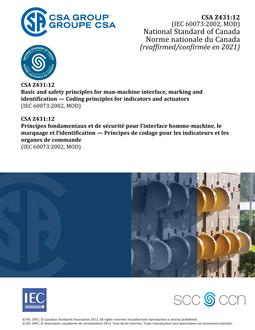This guide will help you understand the New York City elevator door lock monitoring code, how to upgrade, and how much it will cost.
If your elevator maintenance contract doesn’t include changes to NYC elevator code, then you might need a costly upgrade.
The City of New York issued new guidelines for elevator door lock monitoring systems, specifically to meet code referenced in Appendix K. The law requires completion of upgrades and changes by 2020.
Without a doubt, aside from the main entryway to a multistory edifice, the most important door-ways are the elevator entrances and doors found in the lobby. 24/7 Elevator Service has Certified Elevator Inspectors on staff to handle such. Inspections will assure your equipment is code compliant to ASME A17.1.
Keep reading for access to our free NYC Door Lock Monitor Cost Calculator and our full guide with 14 things you need to know.
If you need help finding bids, you can click here to see our detailed list of NYC elevator companies.
| Door Lock Ebook Need even more detail? Get our dedicated guide for “non-experts”. 5 sections, 16 pages, and over 3,000 words – helping you validate the need to upgrade and ways to save money. The Definitive Buyer’s Guide to Elevator Door Lock Monitoring in NYC Get Ebook Now |
Building managers, owners, and condo associations are seeking more information on this New York City elevator requirement. We’re here to help.
Here’s 14 things you need to know about the new Door Lock Monitoring Code:
1. What is The New NYC Elevator Code for Door Lock Monitoring?
The notice from the New York City Buildings Department states, in part:
“As per ASME A17.3 of 2002, as modified by Chapter K3 of Appendix K Section 3.10.12 of the New York City Building Code, all automatic passenger and freight elevators must provide a system to monitor and prevent automatic operation with faulty door contact circuits by January 1, 2020.”
2. Is this New Code for Automatic Elevators Only?
One part of the NYC elevator door lock monitor code makes it clear that this applies to automatic elevators only.
If an elevator is operated by an attendant, then these rules don’t apply and no change is needed.
3. Why the Change?
In short, poor safety and bad press. There have been a number of gruesome accidents in recent years that have caught the press’ attention.
People who have been getting caught in one or both sets of doors getting crushed or killed by the elevator.
4. What Will Improve?
The new elevator door lock monitoring system will help keep doors closed. Many of the recent accidents have been caused when the elevator was allowed to move while the door was open.
This can be avoided with a circuit that keeps the carriage locked in place until all of the doors are properly closed.
5. What About Getting Caught Between Doors?
The new code will also help keep people from getting caught between doors – There have also been incidents where the carriage doors have closed, but the exterior doors have stayed open.
People have been injured by having body parts get caught on the moving doors.
6. Will this Prevent or Give Notice of “Jumpers”?
While only a secondary effect, this might also prevent anyone from jumping out the safety system for the elevator shaft (in other words bypassing the original design of the safety circuit) .
The elevator won’t move while any of the doors on any of the floors are open, thus alerting maintenance that there is a problem.

Hopefully, they might be able to reach that person before they get hurt.
7. What Changes do Building Owners Need to Make?
The changes that need to be made include upgrading to a circuit that stops the elevator when the door contacts are open.
8. What If My Elevator Is Newer than 2009?
Elevators installed after 2009 likely already have the circuit, but in many instances it has been set to a default off position.
- If the circuit is there, an elevator engineer can simply turn the circuit on.
- The manufacturer will need to verify that it meets the criteria of the law.
- You will still need to get a building permit, even if the circuit is there.
- You will need to give the DOB electrical prints of the control board with the stamp of a professional engineer.
- It will need to be inspected by the building department.
9. What if My Elevator is Older than 2009?
Older systems may need modifications to the existing system or an upgrade/ replacement of the controller.
- Any controllers that meet the A17.1-2000 Code likely have the door lock monitoring systems built into them.
- Controllers installed before meeting the 1996 protocols or any with microprocessors that are 18 years old or older will need to be upgraded by adding a new elevator door lock monitor system (see item 12 below).

10. Do I Need a Permit from NYC?
Any change to the elevators will require a permit from the NYC Building Department.
This is true of any changes that you might need to do, including simply turning the circuit on if it’s already on the elevator system.
11. Do I Need “Sign Off” from and Engineer, Architect, and Elevator Controller Manufacturer?
One of the most important, and possibly frustrating part, is that any modification will need to be signed of by an engineer, an architect, and the controller manufacturer.
This might seem like an unnecessary step for some, but if there are major changes, all of these people need to be involved to make sure that the modifications are safe.
12. What Does An Elevator Door Lock Monitoring System Look Like?
The controller circuit is pretty simple, in reality. The microprocessor looks to make sure that all of the switches at each door are closed before it allows the elevator to move.
Asme A17.1 Elevator Code Free

What is most important is that the circuits interact with all of the doors, at every floor and the doors of the elevator itself. This forces the entire system to have every door closed, preventing more of the horrible accidents that have occurred recently.
Here are a couple of the solutions that have arrived on the market already.
- Safe-T-Lock Monitor – The ADAMS Safe-T-Lock is attached to all of the many appropriate circuits, including Car Gate, Hoistway Door Lock, Door Fully Open, and Door Fully Closed. If any of those circuits are not completely closed or open, the Safe-T-Lock Monitor prevents the car from moving. It also includes inputs from Auto/Inspection, Access Mode, and Fire Phase 2.
- Fail Safe Safety Guard – Rolls Elevator Safety has created a code compliant door lock monitoring device. It’s a system that UL listed and SIL certified. Their patented device takes the elevator out of normal service when it senses doors or landings bypasses, FSSG bypass Door locks and car gate switches bypass, rope gripper and brake monitoring. The company claims that it is compatible with old and new controllers.
13. How Much Does a NYC Elevator Door Lock Monitoring System Cost?
Asme A17.1 Elevator Code Free Download
There are a number of estimates on how much the upgrade might cost. The upgrade will vary in cost with differences in elevator age, building height, and other factors. The best estimates are found through ElevatorLab’s Free NYC Door Lock Monitor Cost Calculator found here.
Ansi A17 1 Elevator Code Free Download
As long as the schematics are available, installing a circuit into an older elevator system might be much less expensive.
See Full List On Kingsiii.com
If the circuit is already installed in the controller in your elevator system, you might have little to no expense. See our post on Cost to Install an Elevator Door Lock Monitoring System.
14. How Do I Ensure Success for My Building at The Lowest Cost?
Working with an elevator consultant is the best way to make certain that you get the right solution for the best price.

A17.1 Elevator Code
ElevatorLab is dedicated to making elevator consulting affordable, simple, and available to more people and businesses than ever before. Through our technology and network we can make sure your Elevator Door Lock Monitoring project is a success. Contact us to learn more.